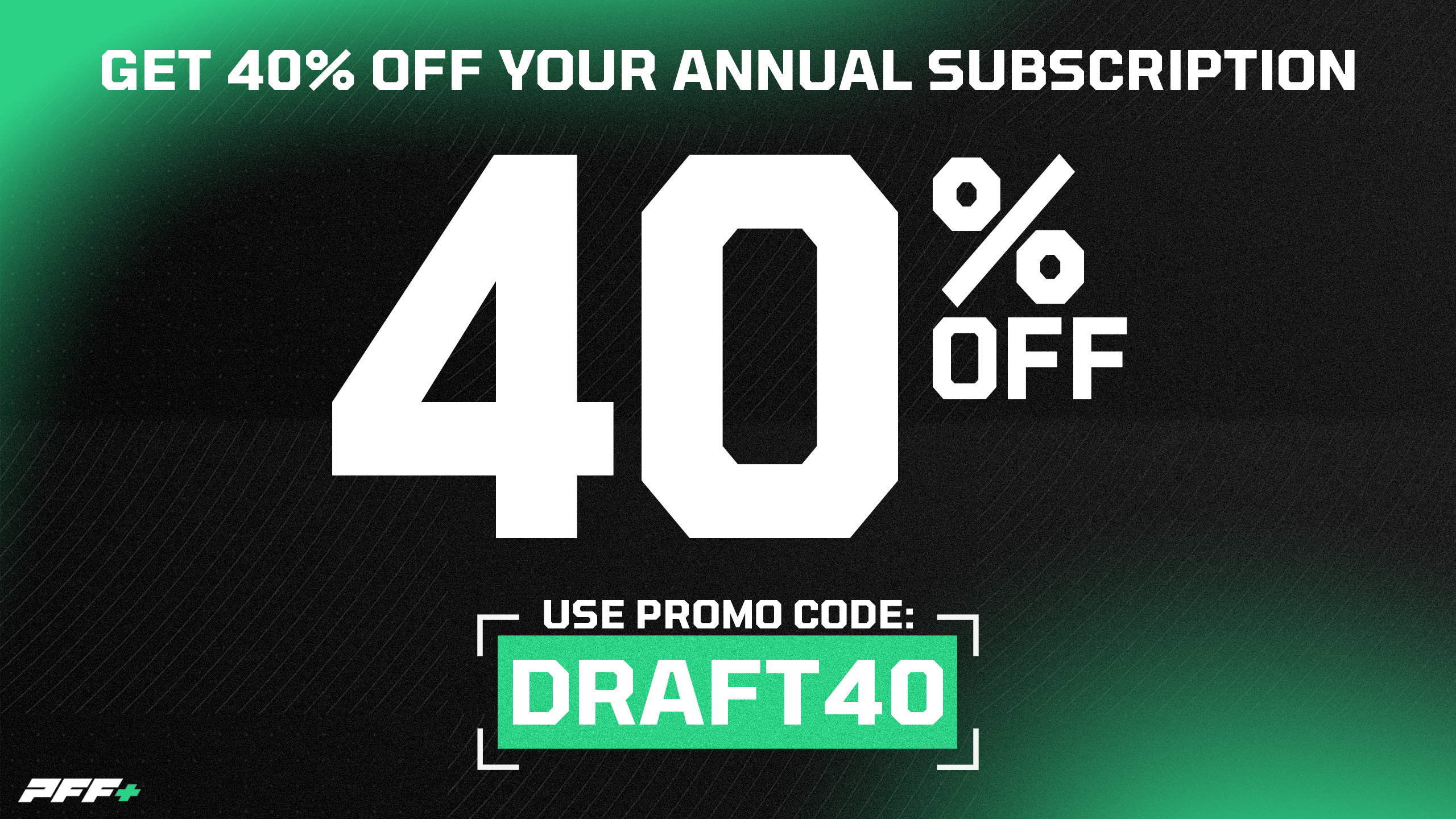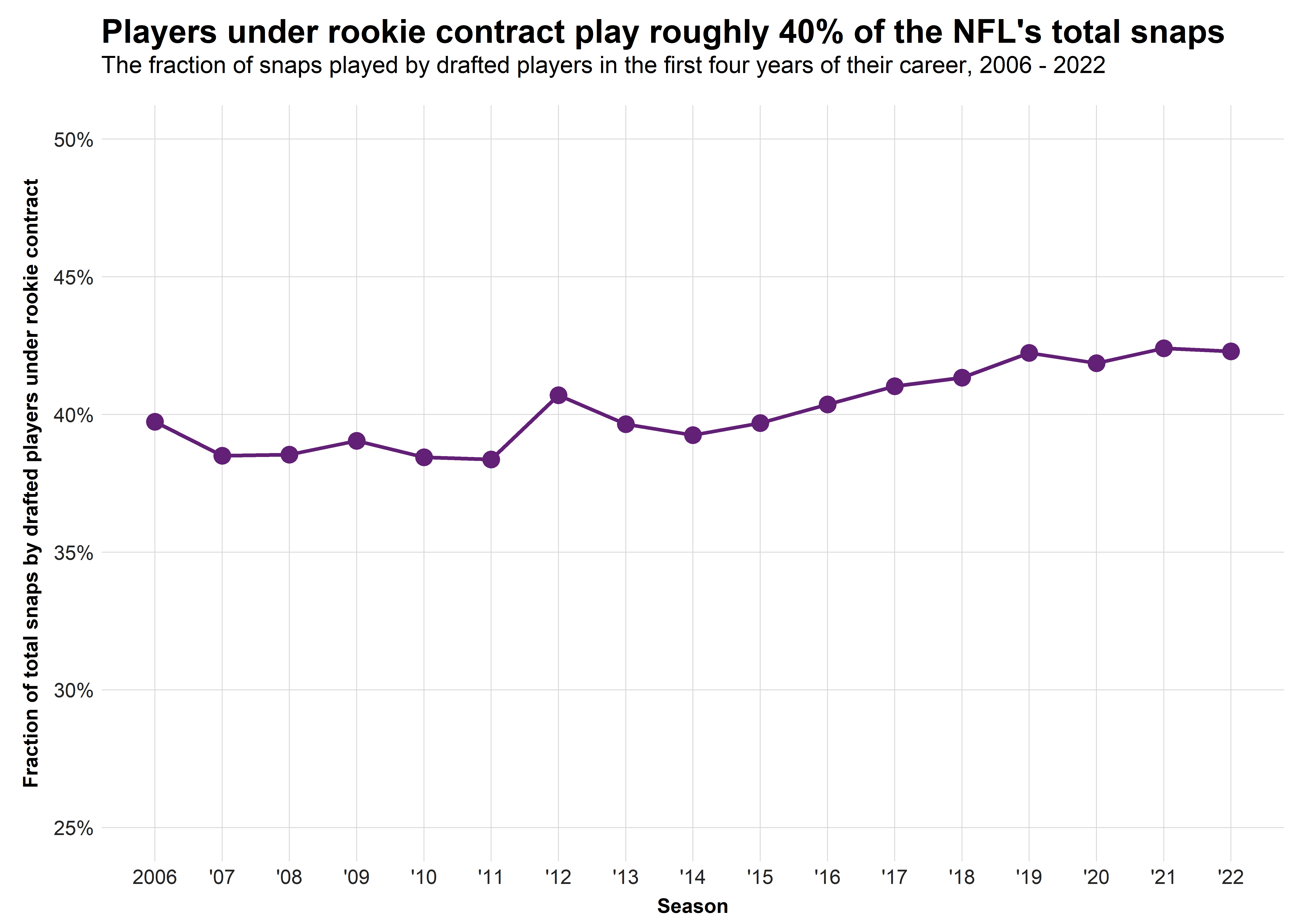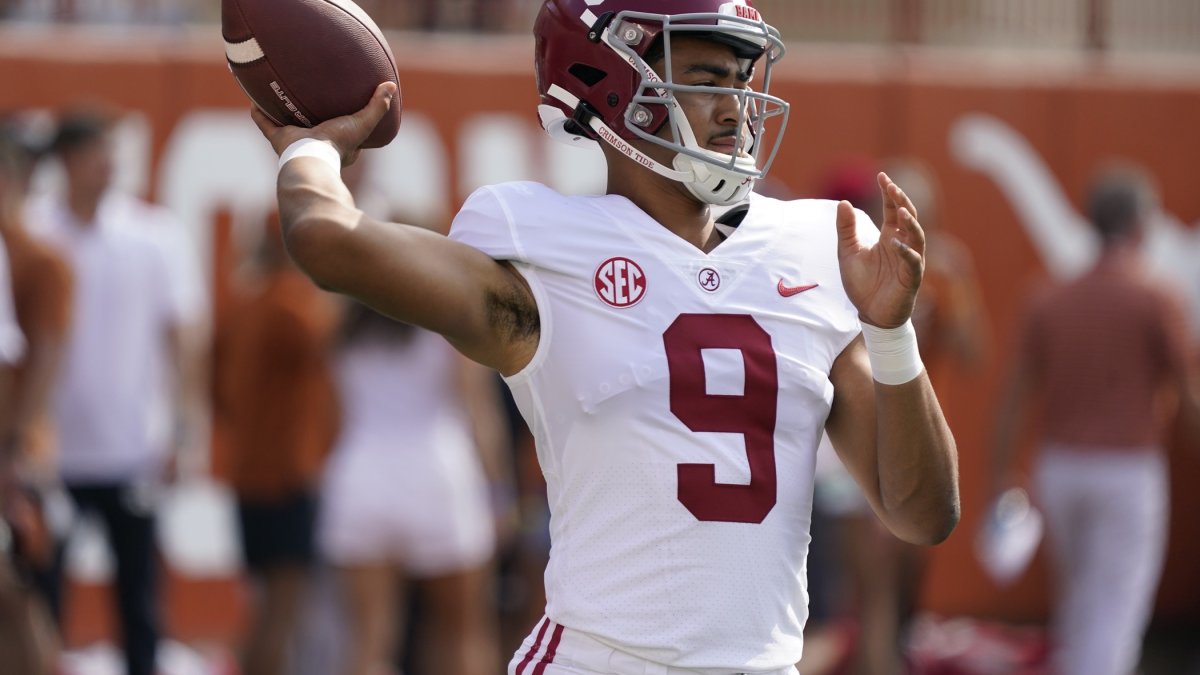• Attaching monetary value to a draft pick: A first-round pick is worth between $20 million and $40 million, and a second-round pick is worth between $15 million and $20 million.
• A blueprint for how teams should approach the draft: Focus on defensive linemen, wide receivers, offensive tackles and cornerbacks on the first two days and try to find other positions with upside on Day 3.
• The Loser's Curse: Without taking a quarterback, the team drafting at No. 1 loses out on surplus value due to the high contract value.
Estimated reading time: 18 minutes
In the modern NFL, a team typically has to handle and optimize three types of assets when it comes to fielding the best possible roster over several years: their collection of players under contract, their cap space and their draft capital.
In the offseason, these three assets are converted into each other:
- Drafting a player turns draft capital into a player under contract
- Trading for a player turns draft capital and cap space into a player under contract
- Signing a player turns cap space into a player under contract
- Trading a player to another team turns a player under contract into cap space and draft capital
- Releasing a player turns a player under contract into cap space
- Not re-signing a player in free agency turns a player under contract into cap space and potentially draft capital (through compensatory picks)
- Trading draft picks for other draft picks turns draft capital into draft capital
If a front office wants to make decisions based on analytical (or any form of) evidence, these three types of assets have to be put on the same scale. Typically, we use either cap dollars or wins (which can be translated into each other through a fairly simple heuristic because we know the total number of wins in a season and the total salary cap in the league) for that common scale. Using cap dollars has the advantage that one of those three assets is already on the same scale, so we would be left with estimating the value of players and draft picks in cap dollars.
Ironically, the hardest among those two tasks is the one that happens every year in free agency: evaluating players in terms of cap dollars. Teams are doing just that all the time, and yet we have to accept that the uncertainty is fairly huge, as those teams often get it wrong. Evaluating a player’s talent level is hard enough, but evaluating how that talent translates to on-field value for a certain team with a certain scheme and certain players around him is even more challenging. This is why mistakes such as the Kenny Golladay contract or — on the opposite end of the spectrum — Shaquil Barrett signing for $4 million dollars happen each year. The latter wasn’t a mistake by the signing team; it was a mistake by the other 31 franchises.
It’s safe to say that estimating the value of individual players will remain a fluent task without a final solution — neither with analytical methods nor with traditional scouting methods, and likely also not with the combination of both. Nevertheless, getting closer to the truth is, of course, valuable.
In this article, however, we will once more focus on the easier part: the translation of draft capital onto the scale of cap dollars. In other words, what is the value of draft picks?

A new method to compute the value of a draft pick
We already discussed and analyzed this topic last year and the year before that, coming up with similar results using two different methods. Since then, my method has been applied by other analysts in the industry, including Ben Baldwin and Kevin Cole. I want to revisit this a third time with a different method: a fairly simple heuristic.
We'll use the same definition of the (surplus) value of a draft pick — the on-field value of a drafted player during his rookie contract minus the cost of his rookie contract. The cost of the rookie contract is determined by the rookie wage scale, so our job is to estimate the on-field value of a drafted player during their rookie contract. In our past analysis on draft value, we did this by looking at the value each draft pick added in terms of PFF WAR or in terms of the veteran contract that their performance would cost on the market. This time, we will use a simple heuristic and deductive reasoning to come up with a framework to compute the value of a draft pick with the help of a given draft chart, no matter on which scale it is.
We are starting with a simple observation: Every year, the total value of NFL players converted to cap dollars is equal to the total money spent on all NFL players. That’s basically true by definition in a league with a hard salary cap. Over a suitable period of time, the total money spent on NFL players is just 32 times the salary cap. Since the salary cap grows over time, it makes sense to use percentage of the salary cap as the unit for computations and then translate it to actual cap dollars by using the salary cap in a given year. In other words, the total annual on-field value of all players in the NFL is 32 multiplied by 100% of the cap number, which gives us 3200% of the cap.
Which fraction of the value comes from players on rookie contracts? Since the introduction of the rookie wage scale, the number of snaps from players on rookie contracts has increased, but it is fairly stable in the past four years, as the following chart shows.

The number of snaps gives us a fairly accurate estimate of the value produced by players under rookie contracts. Of course, not every player under a rookie contract produces the same value per snap, but the same is true for veterans, too. Hence, if the distribution of good and bad players among young players and veterans is the same, the total snap count would be a perfect proxy for the total value.
In reality, that’s not quite true, since the rookie wage scale plus the fact that young players are supposed to grow on the field gives teams an incentive to play a rookie even if a veteran would be better at present. Hence, unsurprisingly, the total fraction of PFF WAR generated by drafted players under rookie contracts is just a bit lower than the fraction of snaps. However, with the exception of a few outlier years, the difference is not stark. And just like for snaps, the fraction has somewhat stabilized in the past four years.
Exclusive content for premium subscribers

WANT TO KEEP READING?
Dominate Fantasy Football & Betting with AI-Powered Data & Tools Trusted By All 32 Teams
Already have a subscription? Log in



 © 2025 PFF - all rights reserved.
© 2025 PFF - all rights reserved.